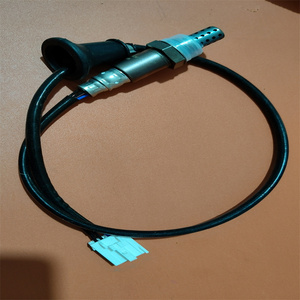Introduction to O2 Lambda Sensor
The O2 lambda sensor is a critical component in modern vehicles, playing a significant role in ensuring optimal engine performance and emissions control. This sensor measures the proportion of oxygen in the exhaust gases, which allows the engine control unit (ECU) to adjust the air-fuel mixture effectively. Precision in this measurement is vital for improving fuel efficiency, reducing harmful emissions, and ensuring compliance with environmental regulations. Understanding the types, functions, and advantages of O2 lambda sensors can help you maintain your vehicle's efficiency and performance.
Types of O2 Lambda Sensors
O2 lambda sensors come in various types, each designed to meet specific operational requirements. Here are the main categories:
- Wideband O2 Sensors: These sensors provide a more precise measurement of the air-fuel ratio across a broader range, improving performance and efficiency.
- Narrowband O2 Sensors: Commonly found in older vehicles, these sensors typically represent a binary reading of the fuel mixture, indicating whether it is rich or lean.
- Planar O2 Sensors: These sensors employ a flat design that allows for quicker response times, enhancing their accuracy and effectiveness in emissions control.
- Heated O2 Sensors: Featuring a built-in heater, these sensors ensure that they reach optimal operating temperatures quickly, which improves performance in cold starts.
Function and Features of O2 Lambda Sensors
The functionality of O2 lambda sensors is pivotal for the overall efficiency of the vehicle. Here are key functions and features:
- Real-Time Monitoring: O2 lambda sensors provide continuous feedback on oxygen levels, allowing the ECU to make instant adjustments to enhance combustion efficiency.
- Emissions Control: By optimizing the air-fuel mixture, these sensors help reduce the emission of harmful pollutants, which is essential for passing emissions tests.
- Fuel Efficiency Improvement: Accurate readings contribute to better fuel economy by ensuring the right amount of fuel is injected into the engine.
- Longevity and Durability: High-quality O2 lambda sensors are designed to withstand extreme temperature and pressure fluctuations, ensuring they perform reliably over time.
Advantages of Using O2 Lambda Sensors
The incorporation of O2 lambda sensors in vehicle systems comes with multiple advantages:
- Enhanced Vehicle Performance: Consistent performance is achieved as the ECU adjusts the air-fuel mixture in real-time, optimizing engine output.
- Cost-Effective Maintenance: Preventative care facilitated by timely sensor replacements helps avoid more costly repairs down the road.
- Improved Fuel Economy: By maximizing combustion efficiency, these sensors help drivers save money on fuel consumption.
- Regulatory Compliance: Vehicles fitted with O2 lambda sensors are more likely to meet stringent emissions regulations, making them suitable for eco-conscious consumers.
Conclusion
In conclusion, the O2 lambda sensor is an indispensable component in maintaining the health of your vehicle's engine while contributing to environmental sustainability. Each type of sensor offers unique benefits, and their accurate functionality plays a vital role in achieving optimal performance and reduced emissions. Investing in a high-quality lambda sensor is not only a smart choice for vehicle efficiency but also a step towards a greener future.























































































































































































